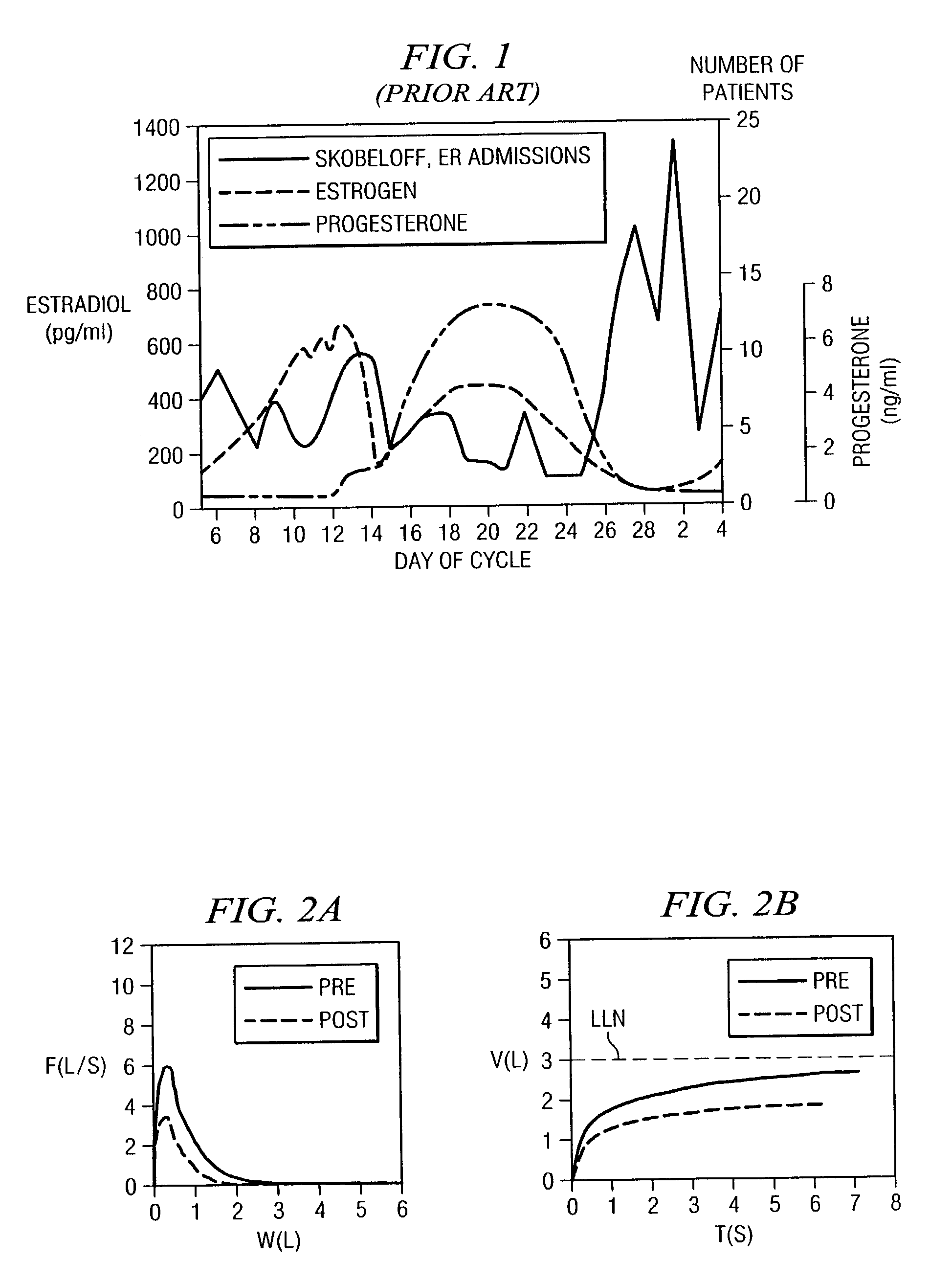Methods and compositions for the treatment of pain and other hormone-allergy-related symptoms using dilute hormone solutions
- Summary
- Abstract
- Description
- Claims
- Application Information
AI Technical Summary
Benefits of technology
Problems solved by technology
Method used
Image
Examples
example 1
Dilution Protocol
[0023]Progesterone USP 50 mg / ml (Schein Laboratories, Florham, N.J.) is diluted with physiologically-compatible(normal) saline to produce the progesterone dilutions used in treatments. The initial progesterone is suspended in sesame oil. Therefore, to achieve an even suspension, the vial must be vigorously shaken at each stage of the initial preparation and before use of each vial. The first dilution is made by adding 0.5 ml of progesterone to 4.5 ml normal saline. This results in a 1:10 dilution of progesterone (progesterone 5 mg / ml) which is labeled “PROG 1.” After vigorously shaking the PROG 1 vial, 0.5 ml is withdrawn and injected into the next vial of 4.5 ml of normal saline. This results in a 1:100 dilution of Progesterone (0.5 mg / ml, “PROG 2”). To produce the next dilution, a vial of PROG 2 is immediately withdraw 0.5 ml and injected into the next vial of 4.5 ml of normal saline. This results in a 1:1000 dilution of Progesterone (50 μg / ml “PROG 3”). These ste...
example 2
[0025]Before beginning treatment, all of a patient's symptoms are assessed and assigned a numerical value by the patient, based on a 10-point scale. Drops are administered to a patient in a standard sequence, starting with plain normal saline (NS) to assess the placebo effect. After plain normal saline, PROG 5 is administered, followed by PROG 3, and then PROG 1.
[0026]After the drops are placed under a patient's tongue, the patient is instructed not to swallow for 5 seconds. Then the patient is asked to swallow the drops. After an additional 15 seconds, the patient is asked to note any change in any symptoms. The patient is questioned about each area of possible symptoms whether they are initially complained of or not. The question is always asked in the same manner, “Are your symptoms worse, unchanged, or better?” The question is asked in this way to always give the patient the option of selecting “worse” or “unchanged” before “better.” This is designed to minimiz...
example 3
[0031]Data has been gathered on the clinical response to dilute progesterone therapy for over 300 patients. Patients presenting for treatment ranged in age from 30 to 70 years old and were predominantly female. See Table 3.
[0032]
TABLE 3Patient DemographicsAge Range30–70yearsMale:Female1:4Progesterone Dosage0.5 mg–.05 μgLength of Treatment1–90days
[0033]Patients generally responded favorably in the areas of both allergy and pain symptoms. In the area of allergy symptoms, 66–87% of patients responded depending on the site of allergy symptoms. See Table 4.
[0034]
TABLE 4Response to Treatment-Allergy Symptoms (N = 300)# of%SitePatientsRespondersImprovement% RespondersNose1098963%82%Eyes907357%81%Throat927064%76%Ear352352%66%Skin342774%79%Asthma / SOB14212467%87%
In the area of pain symptoms, 72–92% of patients responded depending on site of pain symptoms. See Table 5. Over half of the total patients in both groups responded with symptom relief in excess of 60%.
[0035]
TABLE 5R...
PUM
 Login to View More
Login to View More Abstract
Description
Claims
Application Information
 Login to View More
Login to View More - R&D
- Intellectual Property
- Life Sciences
- Materials
- Tech Scout
- Unparalleled Data Quality
- Higher Quality Content
- 60% Fewer Hallucinations
Browse by: Latest US Patents, China's latest patents, Technical Efficacy Thesaurus, Application Domain, Technology Topic, Popular Technical Reports.
© 2025 PatSnap. All rights reserved.Legal|Privacy policy|Modern Slavery Act Transparency Statement|Sitemap|About US| Contact US: help@patsnap.com

